Vinyl Siding Restoration
Professional Vinyl Siding Painting Services
Vinyl siding naturally changes in appearance as it ages. Sun exposure, temperature shifts, surface debris, and moisture gradually reduce the original color depth and finish, leaving the home looking worn even when the siding itself remains structurally sound. Painting offers an effective way to restore the home’s exterior, update its color, and extend the life of the siding without replacement. Professional painters use materials and methods designed specifically for vinyl, ensuring the coating bonds correctly and maintains its appearance over time.
Why Homeowners Choose to Paint Vinyl Siding
Painting vinyl siding has become a practical option for many homeowners, especially when the siding remains in good condition but needs visual improvement. Some of the most common reasons include:
Painting does not alter the siding’s physical structure, but it refreshes the overall look, making the home feel updated and well-maintained.
How Professionals Determine Whether Vinyl Siding Can Be Painted
A careful evaluation ensures the siding is an appropriate candidate for repainting. During this assessment, painters typically look at several key factors.
Structural Condition
The siding is checked for cracks, brittleness, warping, loose sections, and impact damage. Siding that remains intact and flexible is generally suitable for painting.
Surface Stability Review
Over time, vinyl can develop chalking, residue, or a powdery surface. Identifying these conditions helps determine the level of cleaning or preparation required.
Heat Exposure Patterns
Different sides of the home experience varying degrees of sunlight and heat. These patterns help guide paint selection to support consistent results.
Previous Coatings
If siding has been painted before, professionals assess how well the previous coating adhered and whether additional preparation is required.
Choosing the Right Colors for Vinyl Siding
Color selection plays a major role in how vinyl siding performs once painted. Because vinyl expands and contracts with temperature changes, certain colors are better suited to maintaining stability over time. Professionals help homeowners select colors based on several considerations.
(LRV)
Colors with appropriate LRV ratings help reduce excess heat absorption, which supports siding stability during hot weather and minimizes unnecessary stress on the material.
Modern coatings allow for a wider range of colors, including deeper tones, while remaining compatible with vinyl’s heat-sensitive nature. These formulations expand color options without overloading the material.
Professionals consider how the new color aligns with architectural style, roof color, stone or brickwork, and nearby homes. This ensures the new color looks intentional and balanced.
Preparing Vinyl Siding for Painting
Preparation has a direct impact on adhesion, coverage, and long-term appearance. Thorough preparation is essential for vinyl siding because its smooth, low-porosity surface requires correct treatment before painting.
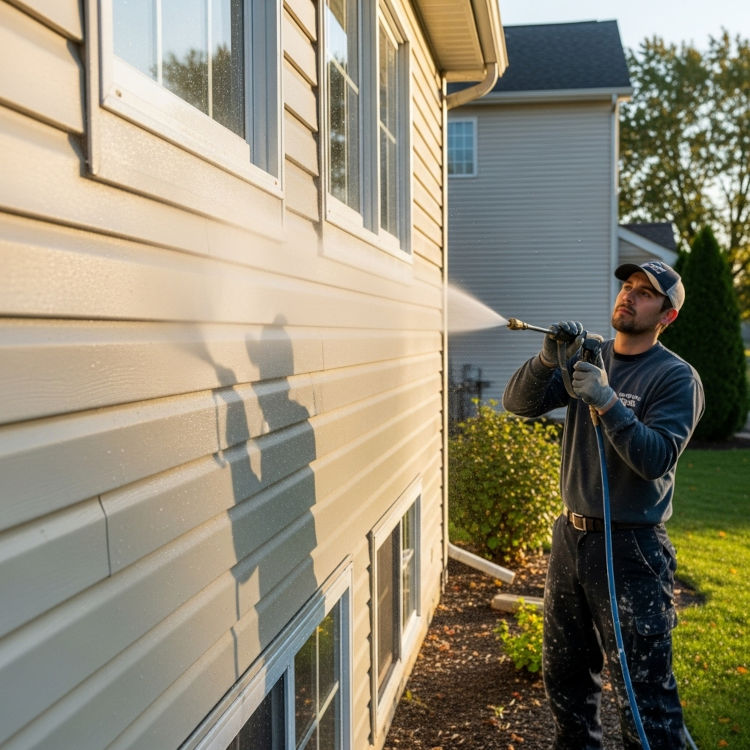
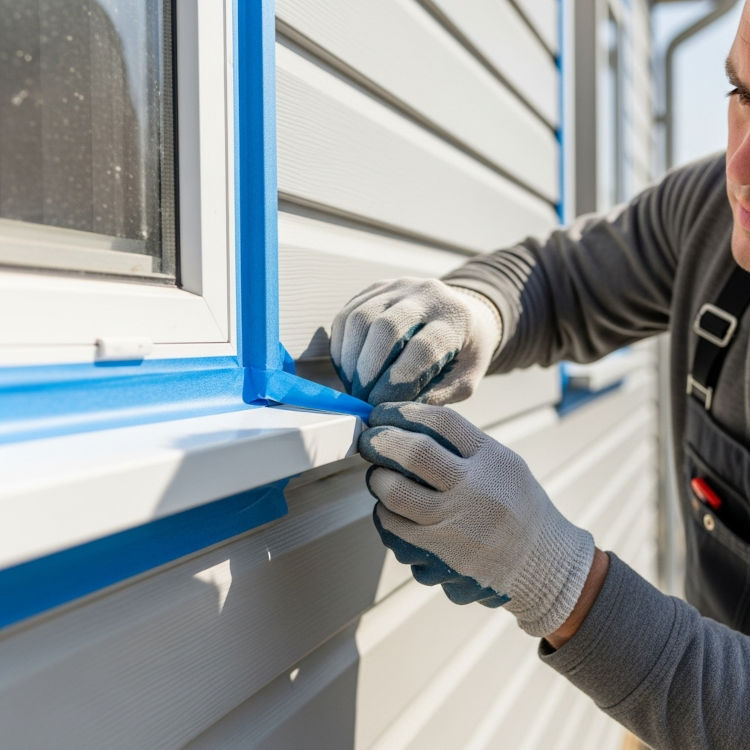
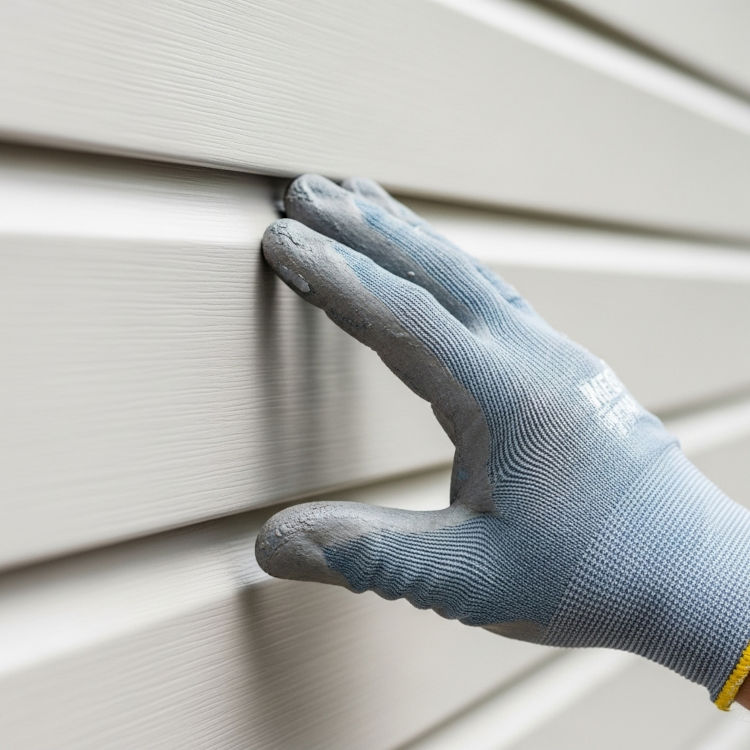
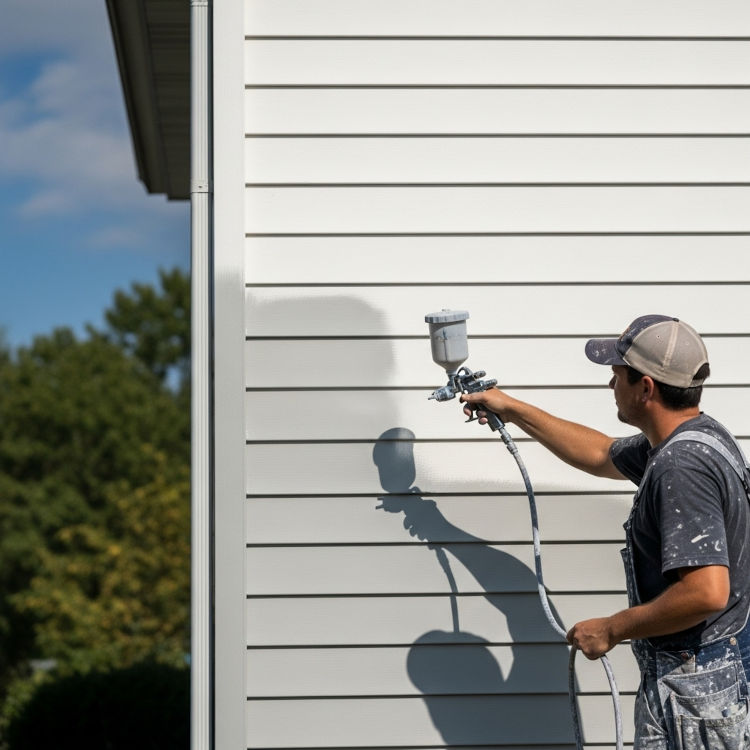
Application Methods for Vinyl Siding Painting
Vinyl siding requires application techniques that provide even coverage without texture buildup. Professionals use tools and methods suited to large exterior surfaces.
Controlled Spray Application
Spraying allows for a consistent finish across wide, smooth panels, offering uniform color distribution.
Detail Work Around Edges
Trim, corners, and edges are finished with appropriate tools to maintain clean transitions between materials.
Proper Coating Thickness
Painters apply coatings in a way that builds adequate coverage while preventing excessive film build.
Understanding Paint Formulations for Vinyl Siding
Vinyl siding requires coatings designed to withstand outdoor environments while remaining flexible enough for thermal movement. Professional painters select paints based on:
These coatings maintain color and adhesion while supporting the natural movements of vinyl siding.

Project Timeline and What Homeowners Can Expect
A vinyl siding painting project follows an organized process that keeps the homeowner informed and ensures each stage moves efficiently.
A typical workflow includes:
Maintenance After Painting Vinyl Siding
Painted vinyl siding requires only light maintenance. Homeowners can keep the exterior looking consistent by:
Rinsing the siding to remove dirt and airborne debris
Avoiding harsh pressure washing or abrasive cleaners

Monitoring areas that receive heavy sunlight
Keeping vegetation trimmed away from the siding
Painting Vinyl Siding vs. Replacing It
Painting is often chosen when the siding is aging visually but remains structurally sound. Replacement may still be recommended if the siding has significant warping, cracking, or brittleness. When it is suitable for painting, homeowners benefit from:
- A refreshed exterior color
- A more uniform appearance
- Reduced cost compared to replacement
- A faster, less disruptive exterior update
Painting extends the usable life of the existing siding while improving overall curb appeal.
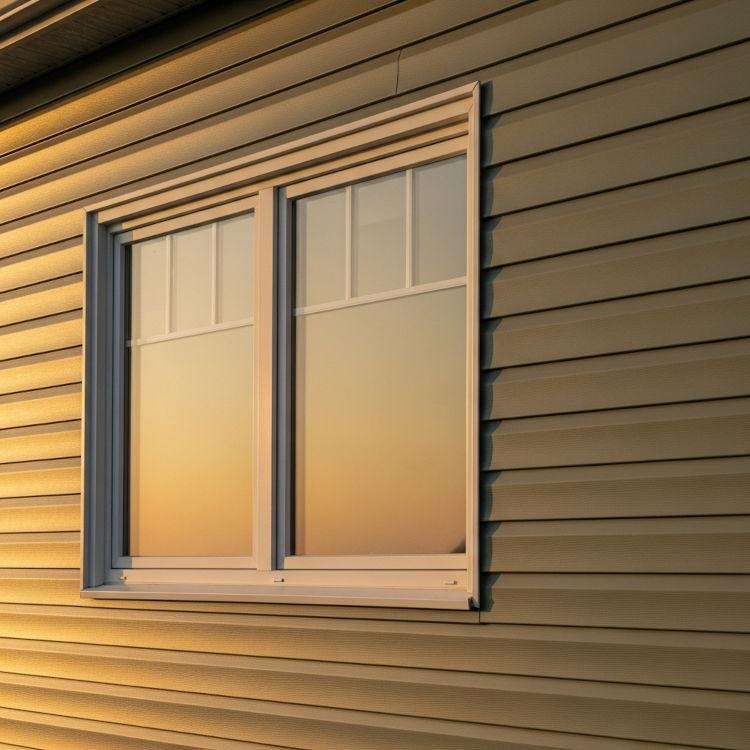
When Painting Vinyl Siding Is the Right Choice
Painting is a suitable option when:
This approach provides a refreshed look without replacing a large portion of the home’s exterior.

Common Questions About Painting Vinyl Siding
Our Home Improvement Services
We specialize in a wide range of professional painting and home improvement services designed to beautify and protect your home. Explore our offerings below to see how we can bring your vision to life.
Ready to transform your home?
Contact us today for a free estimate and expert advice!

